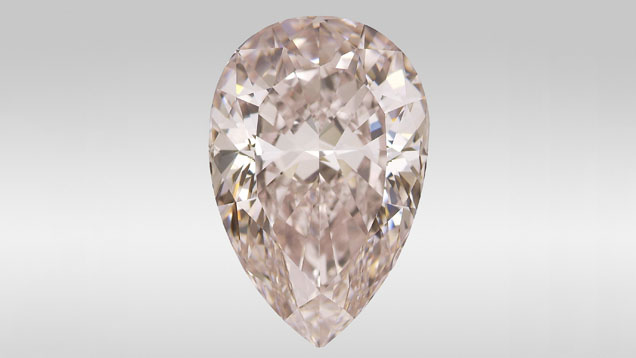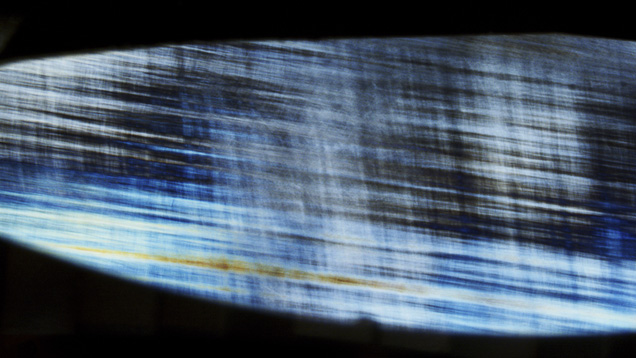Large HPHT-Treated Fancy Pink Diamond

The 20.32 ct pear-shaped brilliant submitted to the New York laboratory (figure 1) was color graded as Fancy pink. We applied FTIR, UV-visible, and PL spectroscopy to examine the color origin for this diamond. The mid-infrared spectrum confirmed it was a type IIa diamond. The UV-visible spectrum showed a broad band at approximately 550 nm, a typical cause of pink coloration in diamond. But the PL spectra suggested that the pink color was improved by HPHT treatment. Most HPHT-treated pink diamonds have a secondary color component in addition to “pure” pink, either brownish or purplish. Interestingly, this sample had no secondary color component. Such HPHT-treated pure pink is extremely rare. Some HPHT-treated diamonds may contain graphitized inclusions and/or pitted surfaces on the girdle, but this one was microscopically “clean,” both internally and on the surface. It also showed the typical tatami strain of a type II diamond when viewed in cross-polarized light, along with the high interference colors often associated with HPHT treatment (figure 2).

Figure 2. The typical tatami strain of type II diamond was observed by viewing the sample under crossed polarizers. It also showed high interference colors, which are often observed in HPHT-treated diamonds. Magnified 30×. Photo by Kyaw Soe Moe.
This sample demonstrated the improvement of HPHT treatment techniques in achieving more intense pink coloration in large diamonds. This was one of the largest HPHT-treated pink diamonds tested in GIA’s New York laboratory. It is very difficult to detect such treated pink color using traditional gemological instrumentation, especially with stones that are free of inclusions, and advanced gemological testing is critical for this purpose.



